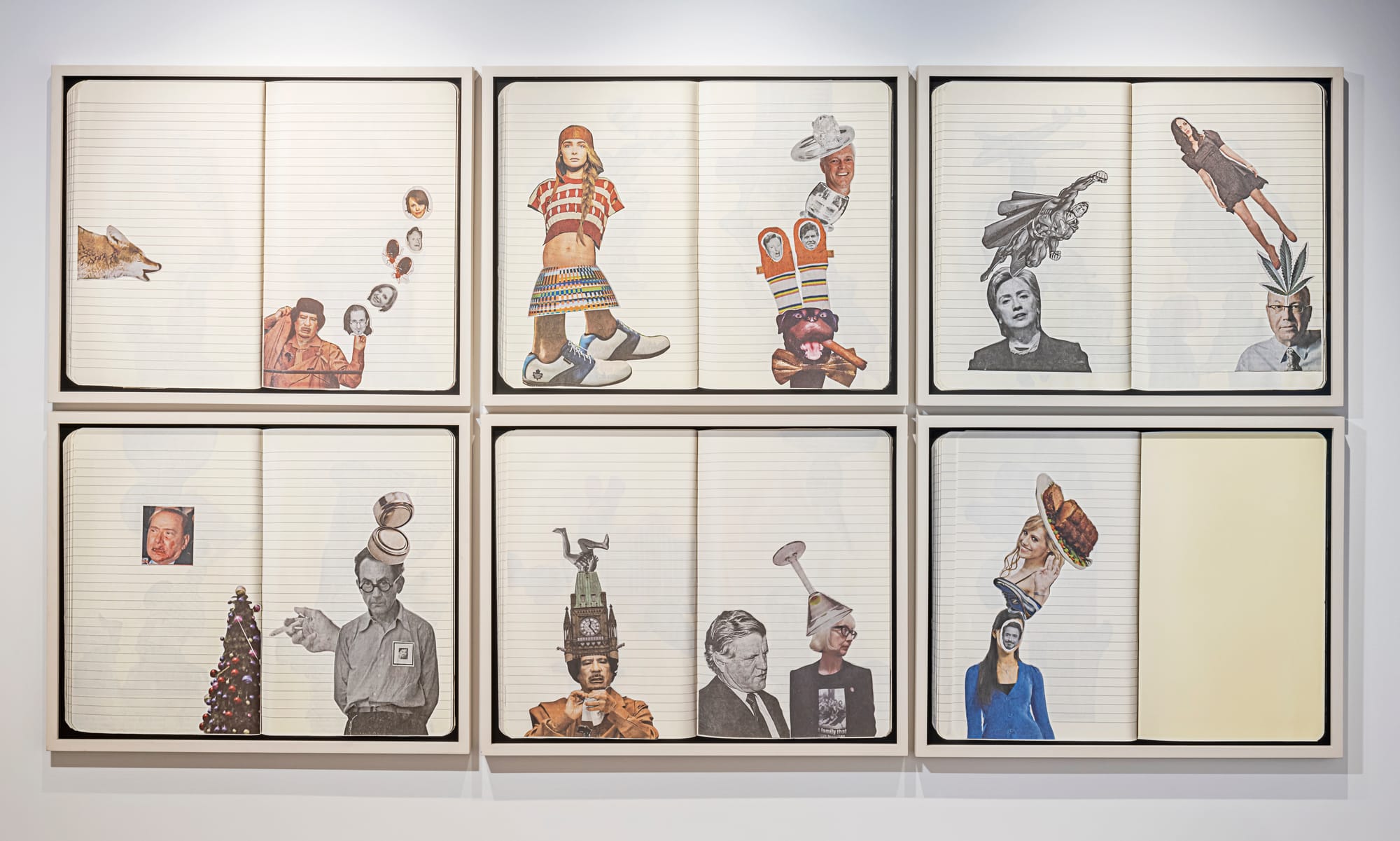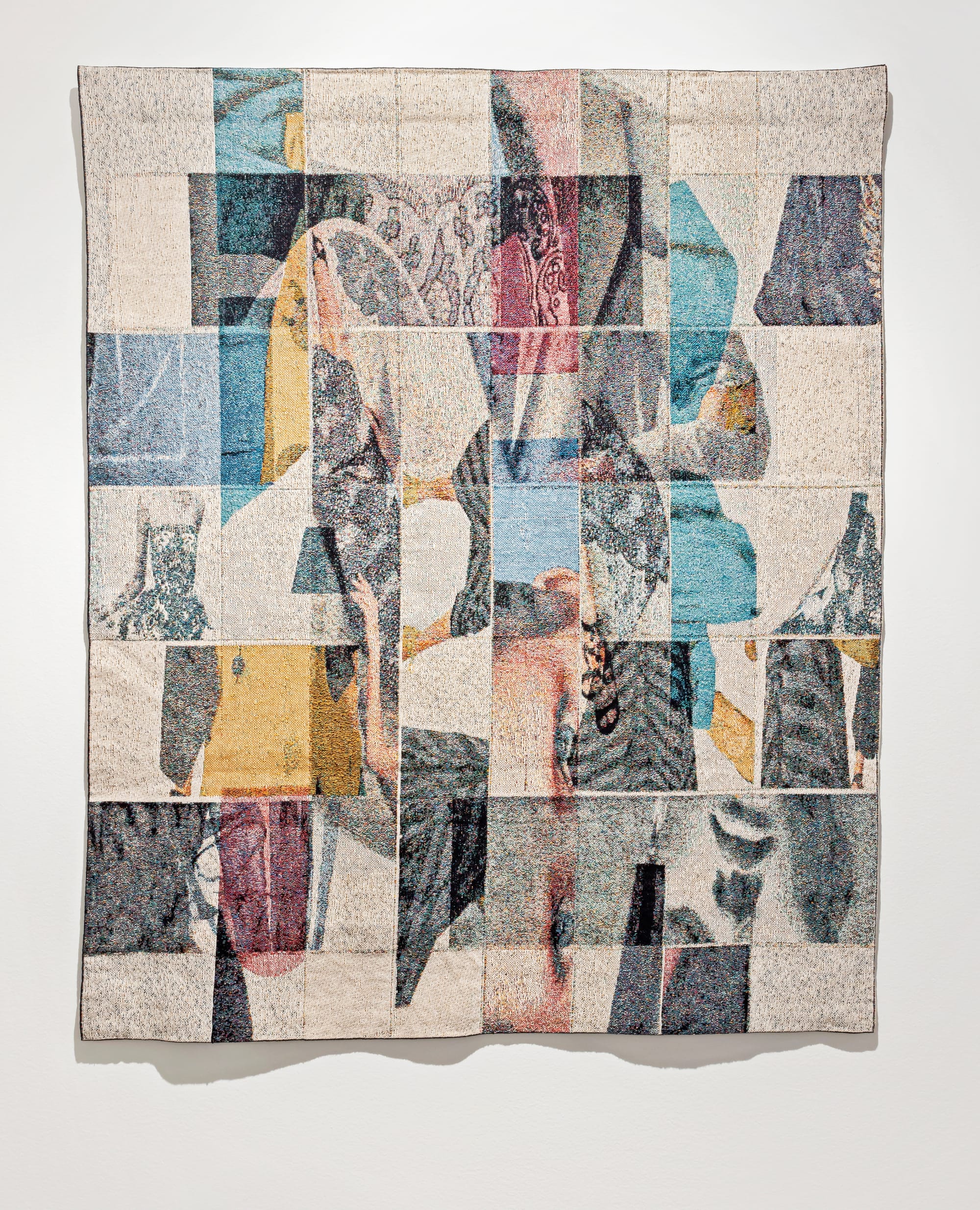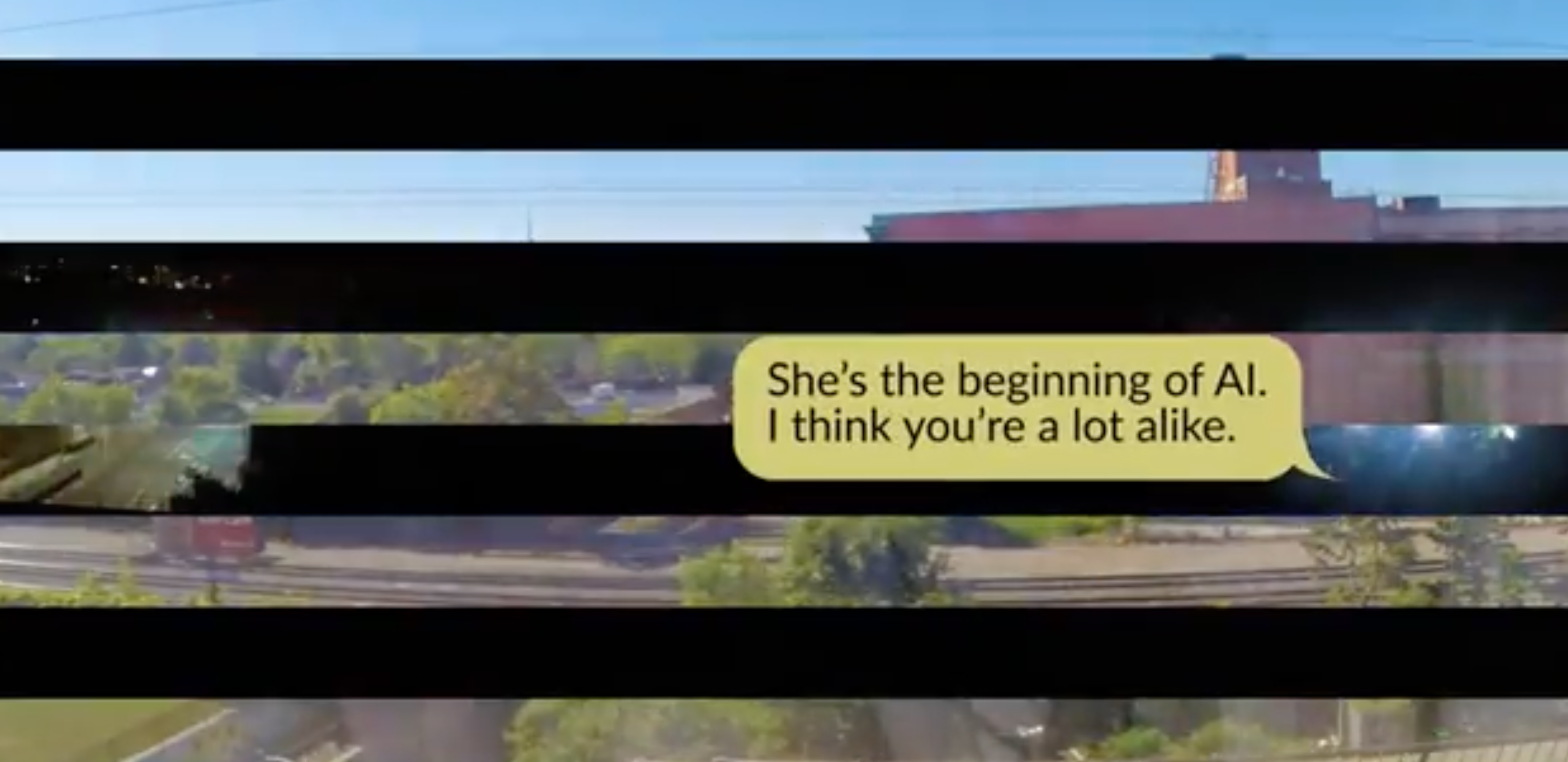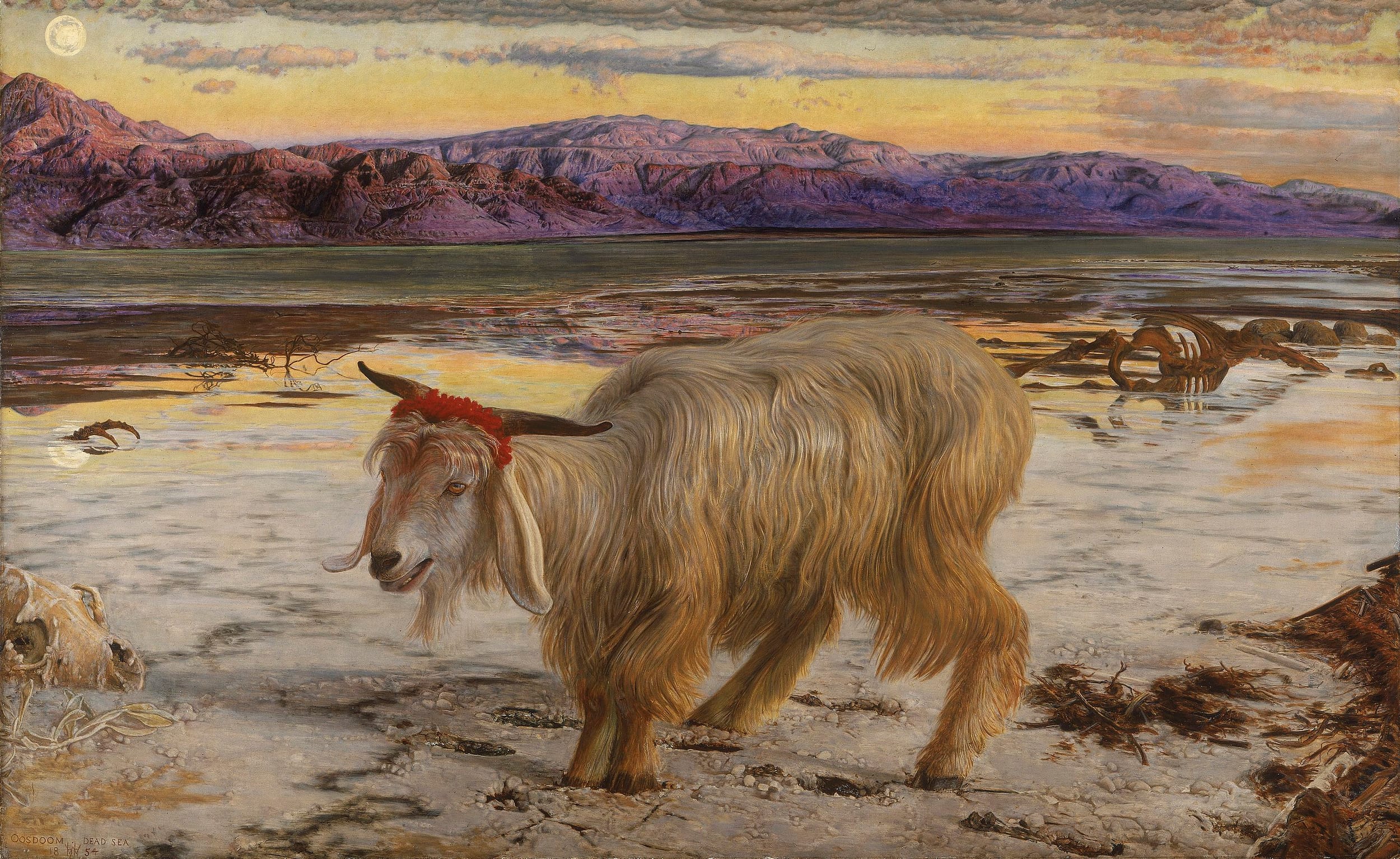Woven Stories and Working Without a Plan: Barbara Astman on being open to discovery
Fresh off of winning a Governor General’s Award in Visual and Media Arts, Barbara Astman looks back at the materials and methods behind her two works included in Koffler Arts' recent group show DECADE.

Over an almost five decade career, Barbara Astman’s work has spanned an impressive range of media—from painting and drawing to photography and sculpture/installation—winning the Toronto-based artist recognition both in Canada and abroad. Earlier this year, she was named the recipient of the Governor General’s Award in Visual and Media Arts for Artistic Achievement.
In nominating her for the award, Scott McLeod, Director of the Prefix Institute of Contemporary Art, said of Astman, “to speak of her work in terms of these traditional media designations belies the innovative, experimental and interdisciplinary nature of her practice. Astman’s work is contemporary in the truest sense of the word. She brings to her art a curiosity about new technological developments, an intimate connection to the present moment, and an active engagement with everyday life.”
Two of Astman’s works were included in the recent Koffler Arts exhibition DECADE, a group show featuring eight artists currently with studios in the Youngplace building. The following is an edited transcript from a gallery talk hosted by Koffler Arts, in which Astman expanded on the materials and methods behind her two works included in DECADE.
Daily Collage, 2009–2011

Back in 2009, I was about to head off on sabbatical, but as it happens whenever I go somewhere, I started getting incredibly anxious about missing the studio. Sure, it’s fun to travel and spend time with my family, but all of a sudden it's like, what do I do with that other energy that is so vital to me? So I packed one of those freezer baggies with my notebook, glue sticks, scissors, and scotch tape. Because it was so small I was able to carry it with me everywhere.
In every city we visited, I would start cutting things out of the newspaper, keeping a whole file by just throwing the clippings into the baggie. Some days I couldn’t always sit down and start collaging, other days I could. But I always made sure there was something from all the different places.
I didn’t really have a plan. It wasn’t like this page is going to be more political, or this one more playful or whatever. It was more like here are the images, cut them out, stack them up, move them around a little bit, get the glue stick out, and make the commitment. Don’t overthink it.
Once we got home, I laid out the pages from the notebook on this wonderful commercial grade scanner I have upstairs at my studio. Then something interesting happened. You can see in the background this ghost image, which I hadn’t expected but loved. So there was that element of surprise, which is always pretty cool. Whenever I’m making art, I don’t want everything so planned out that I already know what the end result will be. It’s not interesting to me. I want to go through the process of making it to see what it actually looks like in the end.
That’s what it’s about for me in almost everything I create. I love that the scanner made it look so 3D. I love that it feels like you could almost turn those pages. And I really enjoyed blowing them up way out of the scale they originally were, because all of a sudden they become something else. They stand on their own. It’s not this precious little book with little teeny pictures in it. I love collage, I love dada. I love dada collage of the 1920s. I love all of that. It’s not like an area of research, but it's always there in the back of my head.
So that’s partially the influence that was going on there. Let’s just collage, let’s do something I can do on the road. Now I look at these and I think the political satire is pretty amusing, though I didn’t think of it back then. It’s almost like a time capsule, this whole series, because people like Libyan dictator Muammar Gaddafi aren’t around anymore, but back then he was in the paper almost every single day.
Woven Stories #48, 2023

This was made during Covid. Obviously there was no school to go to, there was no dark room to play in—none of the facilities that I was used to working with. The thought that kept coming into my head is work with what you have, work with the equipment and materials that you have. So I was making these woven images that are made from handmade strips of packing tape. The images are fragments of found images from the newspaper—newspapers opened up, this tape laid on, and then transferred off. They’re not highly detailed photographic images, they kind of break apart. Then once I had created these woven images they were scanned and printed on paper. I really loved them.
I kept putting these woven images up on the wall and, I don’t know, about a year into it, I wondered what they’d look like woven together into one larger piece, since I’m already thinking about weaving.
So I went looking for a company that could weave the images. But all the companies I contacted were closed at the time because of the lock down. They didn’t have workers, didn't have supplies, they couldn't even get the materials to make these things. So I put the idea on the back burner, thinking I’d come back to them in about six months when a few places had their facilities running again. The company I ended up using wove the images with a digital weaving machine that uses cotton thread for its warp and weft.
This was the very first test weaving that I did. [Astman points to one section of the piece.] This is actually an error, but I loved it. There was the element of me having to learn about the company’s system, where I upload the image and how they see the colour at the other end. It was a big learning curve for me. And this was done offshore, so it wasn’t like I could fly over to India and oversee all of this. Usually, I hate learning new technology, so I was kind of fighting the idea, but then I thought, “Well, dive in the deep end, just do it.” Then I started uploading about one image a week.
It would take a two-week turnaround to get them back. Some I liked more than others, but you can’t just do a sample and say, “Gee, can I send it back?” That’s just not the way it works with these companies. There are all sorts of high-end companies that will make jacquard textiles for you, like the ones you see if you visit Balmoral Castle, for example, but what I loved about this one is that when you get in close it’s all pixelated colour, all these little teeny bits of colour. And I thought, “Ah, so that was going to happen. That’s so cool.”
But when I stand back where you’re standing, suddenly you start to see the images. Up close, it’s all those little bits of colour popping out, there’s really no solid black in here at all. But when you stand back, your eyes and your mind are reading black in there, so I found all of this fascinating.
Anyway, I ended up making around 15 of them, and most of them were included in a show I did at the Corkin Gallery last October. But this one here I kept in the studio, thinking of it as my test print. I learned so much from it, I learned that I should go ahead and do this idea, so it’s become pretty special.
Funny thing, I had a friend here the other day, she looked at this piece and she said, “I’m not understanding, how did you sew all those squares together?” But I didn't sew all those squares together, that’s just the way the machine made it and the way my design worked separating the images.
But other than the machine weaving, the rest of the piece is handmade. It’s me going in and finding the right threads and doing a stupid amount of research—like what kind of thread do you use and how do you do this. It meant watching a lot of YouTube videos, which is pretty amusing, but that’s how you learn how to do this stuff nowadays, right?
(This transcript has been edited for clarity and length.)
Other articles related to DECADE:
Beyond the Landfill of Images: Midi Onodera
Recording Time and Transformation in the City: Vid Ingelevics
An Art Show for a Building and a Moment — DECADE preview
Koffler Arts has also produced a series of short videos about the artists featured in DECADE, including Carolyn Murphy, Barbara Astman, Matthew Schofield, Gillian Iles, Vid Ingelevics, Midi Onodera, Shabnam K. Ghazi, and Ruth Adler.





